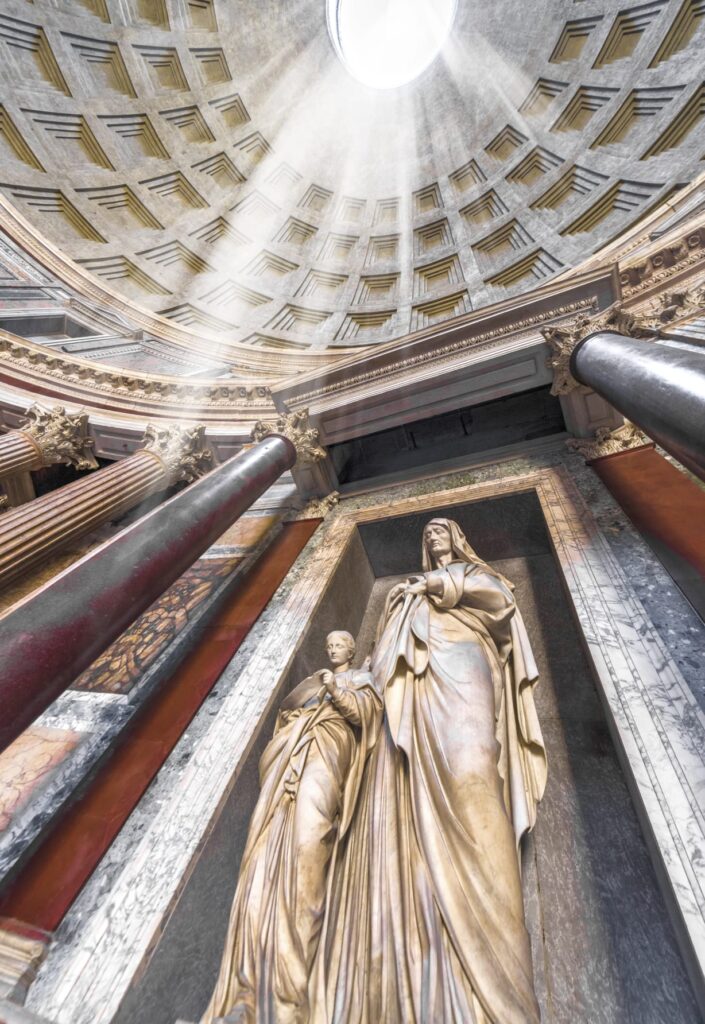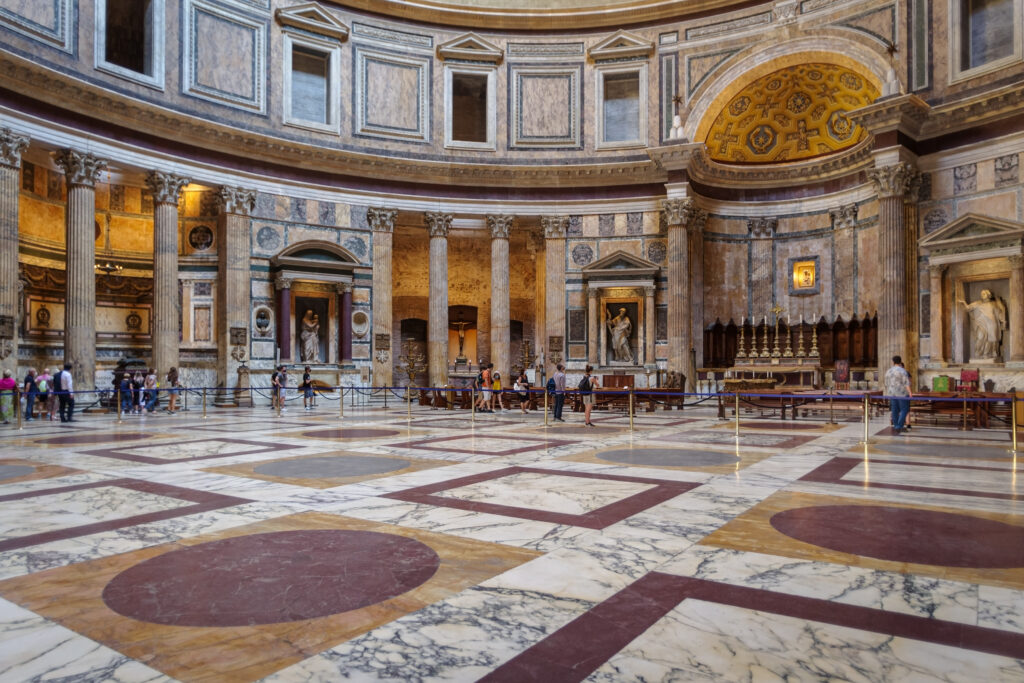
The Legend of the Pantheon: The Escape of the Seven Pagan Gods

The Pantheon in Rome is one of the most iconic landmarks in the world, but beyond its stunning architecture lies a fascinating legend from the time it was converted into a Christian church.
The Pantheon, originally built as a temple for the Roman gods, boasts a rich history that pre-dates its conversion to a church. The engineering marvel of its dome, which remains the largest unreinforced concrete dome in the world, is a testament to ancient Roman architectural ingenuity. This structure has stood the test of time, surviving various natural disasters and political upheavals, which only adds to its allure. Visitors flock to the Pantheon not only to admire its beauty but also to immerse themselves in the layered narratives of its past.
In the context of this conversion, it is essential to understand the religious and cultural significance of the Pantheon during its time as a pagan temple. The ancient Romans held elaborate rituals and festivals in honor of their gods, and the Pantheon served as a focal point for these activities. The shift to Christianity was not merely a change of worship; it represented a profound transformation in societal values and beliefs, leading to the diminishment of the ancient pagan traditions that had flourished for centuries.
According to ancient lore, when the Pantheon transitioned from a pagan temple to a church in the 7th century, something extraordinary occurred—the dramatic escape of the seven pagan gods.
Throughout history, the Pantheon has been depicted in various forms of art and literature, inspiring countless artists and writers. Notably, the poet John Keats described the building as ‘a temple of the soul’ in his writings, reflecting on the emotional and spiritual resonance that such historical sites evoke in individuals. This connection to the past is what makes the legend of the seven pagan gods so compelling, as it intertwines historical facts with mythical narratives, creating a rich tapestry of storytelling.
The names of these gods vary across different accounts, but they are often said to include deities such as Jupiter, Mars, Venus, and others who represented vital aspects of Roman life and culture. Each of these gods embodied specific attributes and powers, playing crucial roles in the daily lives of the Romans. It is believed that as the Pantheon became a Christian church, each deity sought refuge in the surrounding environment, transitioning into the spirit world, while their legacies continued to influence the culture.
The oculus itself has been a subject of much discussion among historians and architects alike. This circular opening at the top of the dome not only serves as a source of natural light but also symbolizes the connection between the temple and the heavens. When the god attempted to escape through this sacred point, it signified the tension between the old and new belief systems. The damage to the pinecone—a symbol of prosperity—was seen as an omen, reflecting the tumultuous transition of power that the Pantheon represented.
Today, the pinecone’s symbolism can still be seen in various contexts, from art to architecture, representing resilience and continuity even in the face of societal change. The Pantheon stands as a reminder of this legacy, inviting reflection on how cultural symbols evolve over time. Its ability to adapt—from a pagan temple to a Christian church—illustrates the shifting landscape of belief and the narratives that accompany those transitions.
The Escape of the Seven Pagan Gods
The legend tells us that when the Pantheon was consecrated as a Christian church, the seven pagan gods, who had long been worshipped in the temple, were forced to flee. These gods, seen as devils by the new Christian faith, did everything they could to escape from the sacred space.
One part of the story stands out: it is said that one of the gods, in a desperate attempt to flee through the roof, caused significant damage to the structure. As the god tried to escape through the Pantheon’s famous oculus, it destroyed the golden pinecone that once adorned the roof.
This golden pinecone was a significant symbol in Roman culture, representing fertility and immortality.

